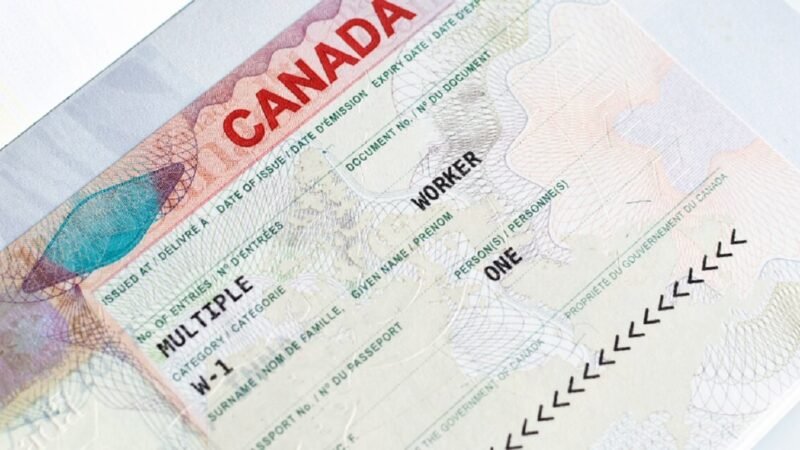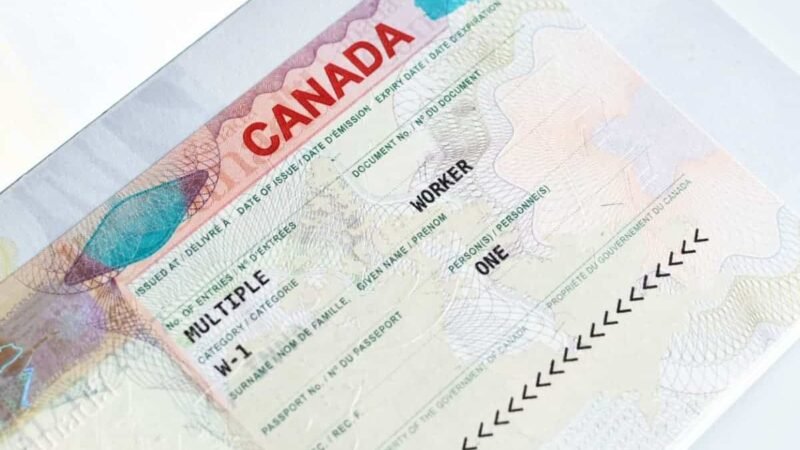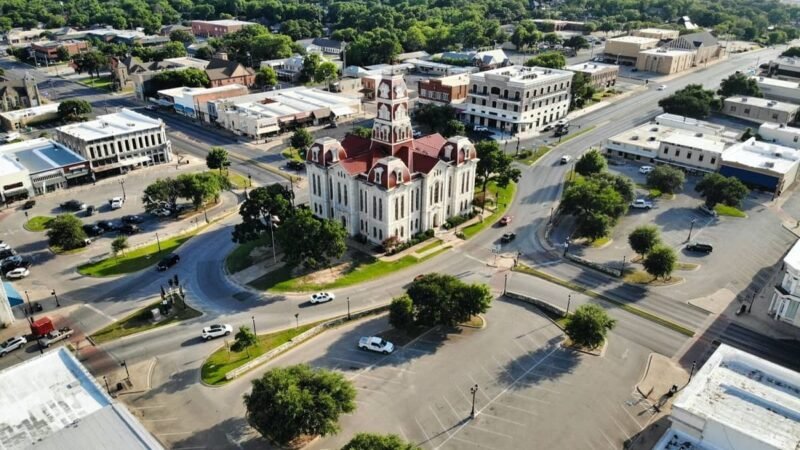How Many Islands in The Philippines?

The Philippines is located east of Vietnam and north of Indonesia, and it is made up of 7,641 islands divided into three major island groups: Luzon, Visayas, and Mindanao. Some islands, such as the capital Manila, Cebu, and Davao, have developed into thriving cosmopolitan cities. Others, like Siargao and Leyte, are more remote and tropical, with something to offer every type of traveler.
The Philippines is the place to be when it comes to natural beauty. There is plenty to explore with our extensive mountain ranges, most diverse reef system, 600 species of birds, and coastline of more than 15,000 kilometers.
Filipinos are primarily Malay, with traces of Chinese, Spanish, and Arab blood. There are over 100 cultural minority groups spread across the country. Today, Islands in The Philippines is the third-largest English-speaking country in the world, and Forbes magazine named Manila one of the world’s friendliest cities. How Many Islands in The Philippines?
Table of Contents
How Large Are The Philippines Based on Their Total Area?
The Phillippines is fairly large, as one would expect from an island nation with so many islands. When inland bodies of water are included in the total area of the Philippines, the total area of the country is approximately 115,831 square miles. If the total area is converted from miles to kilometers, the Philippines has a total area of approximately 300,000 square kilometers.
The Philippines’ coastline is 22,549 miles (36,289 kilometers) long. As a result of this, the Philippines have the world’s fifth-longest coastline. Only Canada, Norway, Indonesia, and Russia have a longer coastline than the Philippines. It should be noted, however, that measuring the lengths of coastlines is difficult.
Weather and Climate
The Philippines has a subtropical climate with two seasons: the rainy season from June to November and a dry season from December to May.
Our dry season is further subdivided into the ‘cool dry season,’ which runs from December to February and is ideal for those looking to travel in a cooler climate. The average temperature ranges between 22°C and 28°C, with little precipitation and mostly sunny and dry weather.
And the ‘hot dry season from March to May – this is the Philippines” summer,’ with temperatures reaching 40°C in the middle of May.
Visit The Cities
Cebu City
Cebu City, with its perfect balance of island coast and cosmopolitan living, is one of the Philippines’ top destinations for both foreign and domestic travelers. It is also the country’s oldest city and one of the Philippine birthplaces of Christianity. Tourists can swim with a variety of species off the coast of the island just outside the city’s borders, or they can try more adventurous activities like canyoneering at Kawasan Falls.
Davao City
Davao City is a great getaway because it is the largest city in the Philippines (by population) and the capital city of the Davao region. Popular destinations include Eden Nature Park (a relaxing mountain resort), Malagos Garden Resort (a 12-hectare nature theme park with the Philippines’ first chocolate museum), and Jack’s Ridge (a dining destination with a spectacular view of the city).
Mount Apo, the highest peak in the Philippines and a mountaineer’s paradise, is also located in Davao City. Its highest point is 2,954 meters above sea level (9,692 feet). Davao is also known as the home of the critically endangered Philippine Eagle (also known as the monkey-eating eagle), which was named the Philippines’ national bird.
Below is a detail of the largest Philippine islands.
1. Bohol Island
The island is the main island of the province of Bohol and is located in the southern part of the Visayas region. Bohol is the tenth largest island in the Philippines, with an area of 3,269 km2.
The Chocolate Hills are a unique geological formation on the island. This natural wonder, designated as a National Geological Monument, draws visitors from both within and outside the country. The Philippine Tarsier, a tiny primate endemic to the Philippines, is another draw in Bohol.
2. Ifugao Rice Terraces Island
The Ifugao Rice Terraces are yet another example of the stunning scenery found throughout the Philippines. For thousands of years, the mountains of Ifugao province have been cultivated with terraced rice fields. The rice terraces are not only beautiful to look at, but they are also an example of an industry working in harmony with nature.
3. Cebu Island
Cebu Island, affectionately known as the “Queen of the South,” is the largest island in the Visayas region and the 126th largest island on the planet. This sun-kissed island is a plethora of dramatic coastlines, beautiful beaches, limestone hills, and glorious coral atolls just offshore, stretching for over 120 miles from top to bottom.
Cebu, home to over 3.5 million people, is a tropical paradise. It is made up of large pockets of developed areas, particularly around Cebu City, which has an interesting mix of Spanish colonial history, leaving the rest of the island largely undeveloped. Cebu island, once the 17th-century country capital, makes up the bustling province of Cebu, along with hundreds of other smaller islands.
4. Leyte Island
Leyte is a Philippine island in the Visayas group. The island is politically divided into two provinces: (Northern) Leyte and Southern Leyte. Southern Leyte Province includes the island of Panaon to the south. Biliran Island, located to the north of Leyte Island, was previously a sub-province of Leyte but is now a separate province known as Biliran Province. Tacloban City, on the eastern shore at the northwest corner of Leyte Gulf, and Ormoc City, on the west coast, are the major cities of Leyte.
Today, Leyte is notable for the geothermal power plants near Ormoc. Leyte, on the other hand, is best known for its role in the reconquest of the Philippines during World War II. General Douglas MacArthur waded ashore on Leyte on October 20, 1944, declaring, “I have returned.” The Japanese, however, were not so easily defeated, as the subsequent Battle of Leyte demonstrated, and the convergence of naval forces resulted in the four-day Battle of Leyte Gulf, the largest naval battle in history.
5. Mindoro Island
Mindoro, the seventh largest island in the Philippines, is located between the islands of Luzon and Palawan. The island is divided into two provinces, Occidental Mindoro and Oriental Mindoro, with a total land area of 10,572 km2.
Because of its proximity to Luzon, White Beach in Puerto Galera, Oriental Mindoro, is a popular weekend destination for many Filipinos from Metro Manila. Mindoro is also famous for the tamaraw.
It is now listed as an endangered species.
6. Panay Island
Panay, a triangular-shaped island in the central Philippines, is the most western of the Visayan Islands. It is the fourth most populous island in the vast archipelago, with nearly 4.5 million residents as of the last count. To put it into perspective, that equates to 4.4% of the total population of the country.
While Panay Island is beautiful in its own right, with countless mysterious caves and rivers, it is frequently used as a stepping stone to the more popular Boracay and its celebrated White Beach.
7. Manila Island
The capital city of the country is Manila, also known as the “Pearl of the Orient.” There are museums, parks, theaters, shopping malls, and a plethora of restaurants to choose from in this bustling historic city.
The Philippines is quickly becoming a foodie destination, and Manila is well known for its diverse cuisines and street food markets, such as the Legazpi Sunday Market, Quiapo Market, and the country’s own Chinatown, Binondo.
8. Palawan Island
Palawan Island is the largest island in the Philippines’ Palawan Province. The island’s northern coast runs along the South China Sea, while its southern coast runs along the northern limit of the Sulu Sea. This island is very traditional and undeveloped. Many tourists come to see the abundant wildlife, jungle mountains, and white sandy beaches.
Palawan, the only Philippine island mentioned, was named the best island destination in East and Southeast Asia by National Geographic Traveler magazine in 2007. And the 13th best island in the world overall “Natural seascapes and landscapes are breathtakingly beautiful. One of the Philippines’ most biodiverse (terrestrial and marine) islands.
Since the early 1990s, the island has been designated as a Biosphere Reserve, demonstrating local support for conservation and sustainable development “. The island is home to Iwahig Prison and Penal Farm, one of the Bureau of Corrections’ seven operational units. A fishing vessel carrying illegally poached animals ran aground on a coral atoll off the coast of Palawan Island in April 2013.
9. Chocolate Hills
The famous Chocolate Hills on the island of Bohol appear to be from another world, as they seem to tumble out one after the other for as far as the eye can see. The stunning scenery is actually a natural formation that evolved over eons.
When the 1,200+ peaked and rounded mounds aren’t covered in green vegetation in the summer, they’re said to resemble you guessed it chocolate. The Philippines has designated the majestic Chocolate Hills as a National Geological Monument.
10. Negros Island
The Island was founded on May 29, 2015, and it covers an area of 5,139 square miles. Negros has a population of 4,414,131 people, the majority of whom are Negrenses. It is bordered by the Visayan Sea, the Bohol Sea, the Sulu Sea, the Guimaras Strait, the Panay Gulf, and the Tanon Strait.
The active Kanlaon Volcano is the highest point on the island. The island’s volcanic activity is used to generate electricity. The provinces of Negros Occidental and Negros Oriental, as well as the city of Bacolod, make up the island. Sugar production, along with hardwood, cotton, and gamefowl breeding, is the island’s primary economic activity.
11. Samar Island
It is the most easterly of the Visayas group of islands in the central Philippines, bounded by the Samar Sea, the Philippine Sea, and the San Bernardino Strait.
Samar Island Natural Park protects about a third of its land, which is made up of three provinces and connected to Leyte by the San Juanico Strait. It is the largest connected section of old-growth forest in the Philippines. While it lacks the iconic mountains that the rest of the archipelago is known for, it is still a hilly island with scenic coastal plains and flood lands.
12. Mindanao Island
Mindanao has a total land area of 37,657 square miles. Mount Apo, the nation’s tallest mountain at 9,692 feet above sea level, dominates the island’s landscape. Mindanao is bounded to the north by the Mindanao Sea, to the east by the Philippine Sea, to the west by the Sulu Sea, and to the south by the Celebes Sea.
Sulu, Samal, Basilan, and Dinagat are part of the larger Mindanao island group. Mindanao is home to an estimated 21,968,174 people, with Davao City housing 1,632,991. Mindanao accounts for 14% of the nation’s GDP, and its main economic sectors are agriculture, fishing, industry, service, and forestry.
13. Calauit Island
Calauit Island, known for its crystal-clear waters, offers eco-tourists the opportunity to swim with dugongs. These animals, which are related to manatees, are thought to have inspired mermaid legends. Locals on Calauit Island lead conservation-focused tours, teaching tourists about dugongs and how they can help ensure their survival.
14. Islands in The Philippines Luzon
Luzon is the Philippines’ largest island, covering 104,688 square kilometers. It is the main island of the Luzon group of islands and is located in the northern part of the archipelago. Luzon is home to 30 of the Philippines’ provinces. Manila, the country’s capital, is also located here.
The Mayon Volcano, located in the province of Albay, is one of the island’s most majestic icons. It is an active volcano known for its perfect cone shape.
Other well-known destinations in Luzon include two UNESCO World Heritage Sites. The Hispanic Town of Vigan in the province of Ilocos Sur and the Rice Terraces in Batad and Bangaan in the region of Ifugao, as well as the Walled City. Of Intramuros in the capital Manila and the town of Donsol in the province of Sorsogon, which is known as the best spot to swim with whale sharks.
Why It’s More Fun In The Philippines?
The Philippines has thousands of reasons to visit. It’s well-known for its powder-white sands, turquoise waters, and stunning coral reefs. But there’s so much more to discover on the 7,641 islands that make up this enchanted region of the world. Look past the spectacular diving and dream beaches to discover a land rich in culture and contradictions.
Discover lush green rice fields, vibrant and fashionable cities, roiling volcanoes, incredible underground rivers and caves, the most amazing wildlife, and, most importantly, friendly and fun-loving people.
Whether you’re looking for water sports, a taste of culture, or simply want to relax on a beautiful beach. The Philippines is the best value-for-money destination with something for everyone.
Frequently Asked Questions (FAQs) about How Many Islands in The Philippines?
What are the 4 main islands of the Philippines?
Luzon, Visayas, and Mindanao are the three (3) major island groups that comprise the Philippines. The islands of Luzon and Mindanao are named after the largest island in their respective groups. Whereas the Visayas is an archipelago.
Do the Philippines have 7100 islands?
The Philippines is a nearly 300,000-square-kilometer archipelago of over 7,100 islands. It is situated between the South China Sea. And the Philippine Sea in the west and the South China Sea in the east. The chain’s two largest islands, Luzon and Mindanao, account for roughly 65 percent of the country’s total landmass.
What is the Philippines’ oldest city?
Cebu City, located 365 miles south of Manila, is the capital of Cebu Island Province. Cebu, the Philippines’ oldest city and first capital, has a population of 2.5 million people.
Which country has the greatest number of islands?
According to the website worldatlas.com, Sweden has the most islands on the planet, with 221,800, the majority of which are uninhabited.
What is the Philippines’ oldest location?
Cebu is said to be the oldest city in the country. It was the first Spanish settlement and the Philippines’ first capital. And it is regarded as the birthplace of Christianity in the Far East.
What is the name of the Philippines’ seventh largest island?
Mindoro, the seventh largest island in the Philippines, is located between the islands of Luzon and Palawan. The island is divided into two provinces, Occidental Mindoro and Oriental Mindoro, with a total land area of 10,572 km2.
What is the Philippines’ largest province?
Palawan is a Philippine island province located in the MIMAROPA region. Its capital is Puerto Princesa City, and it is the country’s largest province in terms of total jurisdiction. Palawan’s islands extend from Mindoro in the northeast to Borneo in the southwest.
What is the Philippines’ heart?
Marinduque is known as “The Heart of the Philippines” because its shape is similar to that of a human heart. Its position on the archipelago’s arrangement. It is also similar to the anatomy of where the heart is in the human body.
What is the total number of cities in the Philippines?
As of September 7, 2019, the Philippines had 146 cities. Thirty-three of these cities are highly urbanized (HUC), and five are independent component cities (ICC). And the remaining are component cities (CC) of their respective provinces.
Also Read:
1st Largest Island in The Philippines
2nd Largest Island in The Philippines





